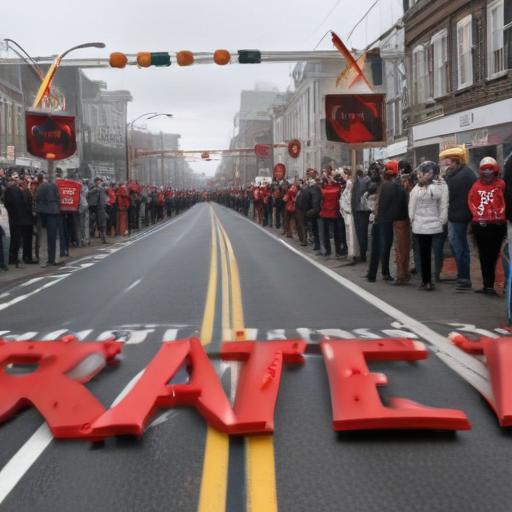Route 1 completion ushers in celebrations and protests in Searsport
SEARSPORT, Maine — A celebratory ribbon cutting for the long-awaited Route 1 project in Searsport was cut short Tuesday morning as demonstrators filled the town hall, drawing attention to local and national debates as Sen. Susan Collins visited the community.
The ceremony marked the culmination of decades of planning, two years of Main Street construction, and roughly $22 million in total investment, about $9.2 million of which Collins helped secure. Beyond smoother pavement, the project added accessible sidewalks for pedestrians with disabilities and repaired water mains and sewer lines.
Maine DOT acting commissioner Dale Doughty cited several factors behind the lengthy timeline, including rising costs due to inflation. Yet the overarching driver, he said, has been aligning the project with the community’s broader vision, a cornerstone of the department’s village program.
Local residents welcomed the completion and the return of two-way traffic on the main thoroughfare. “It was very inconvenient for a couple of years on and off,” said Searsport resident Rolf Olsen about the recent construction. “The downtown is really picked up, the sidewalks are nice. It did harm several businesses, though.”
Nearby Splendiferous Sweet Shoppe, which has been serving Main Street for six years, felt the impact. Owner Meryem Rogan described how summer sales declined during the disruptions as tourism ebbed and locals navigated the construction to reach downtown businesses.
As celebrations continued, protesters used the occasion to voice opposition to Collins’ broader political positions and policies. Belfast resident Rachel Herbener, among those critical of Collins’ record, said, “Susan Collins has sold out the working class. She made it possible for a third of Mainers to lose Medicare, hospitals are closing, and she did not stop this bill.” Belfast’s Janis Hogan urged Collins to consider representing democracy more robustly, saying, “This is the moment to not be looking at reelection and to stand up for our democracy.” Searsport resident Olsen acknowledged the protest as part of the conversation around national issues.
Collins acknowledged the tensions and addressed demonstrators directly during the ceremony at Searsport Town Hall. “Let us get through this brief ceremony to celebrate something that really matters to this historic community,” she said, adding that she would return after the formalities to talk with attendees. Following the remarks, Collins mixed with the crowd and spoke one-on-one with protesters.
Editor’s note: The project’s completion brings tangible infrastructure gains to Searsport—improved roads, safer sidewalks, and more reliable utilities—while underscoring how local projects can become flashpoints in national political discourse. The balance between open civic engagement and bipartisan tensions is a reminder of the evolving relationship between infrastructure investments and public opinion.
Summary: The Route 1 project in Searsport culminates in a two-way main street, improved sidewalks, and upgraded utilities after two years of work and $22 million in funding, with Senator Collins securing part of the financing. The event featured both celebratory parishioners and protesting voices, and Collins engaged with demonstrators after the ceremony.
Positive takeaway: The completion promises long-term benefits for residents and visitors through safer pedestrian routes, better traffic flow, and improved downtown vitality, while showcasing a community actively engaging in governance and accountability.
